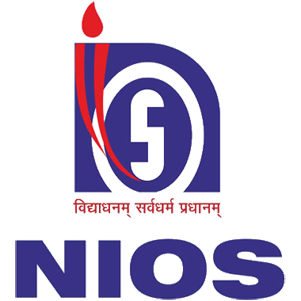Looking for:
10 Best Cisco Network Monitoring Tools for (Paid & Free).Cisco Unified Real-Time Monitoring Tool Administration Guide, Release (1) – Cisco

Figure through Figure show examples of different alert menu categories and their associated windows. You can use the Window menu to close opened monitoring windows by using two menu items: Close and Close All Windows.
You can use the Close menu item to close the current active window in the right content viewing panel. Use the Close All Windows menu item to close all opened monitoring windows. Figure shows a Window menu example. Figure shows an Applications menu example. The Help menu provides information about product name, client and server software versions, and third-party libraries software version information, as well as RTMT help pages. To support the precanned set of monitoring objects, the RTMT main user interface comprises two parts: left controlling center pane and right content viewing panel.
The controlling center comprises the View tab and the Alert tab. The View tab comprises several different monitoring categories, and the Alert tab comprises only the Alert category. The View and Alert tabs differ in that anything related to the View tab gets saved as a profile that can be restored at any time that RTMT is invoked.
The Alert tab relates only to the systemwide alert functionality. The states cannot be saved. See the “View Tab” section and the “Alert Tab” section for more information about each tab. The polling rate in each precanned monitoring window remains fixed, and the default value specifies 30 seconds. If the collecting rate of RISDC real-time information system directory changes in Cisco CallManager Administration service parameters web pages, the polling rate in the precanned window also updates.
In addition, the local time of the RTMT client application and not the backend server time, provides the basis for the time stamp in each chart. See the following sections for more information on each category:. The Summary page provides monitoring of some important common information on a central page.
Monitored information includes. Figure shows a summary monitoring page example. See Figure through Figure for examples of each monitored object. The Critical Services monitoring category provides the name of the critical service, the status whether the service is up, down, or activated , and the elapsed time during which the services have been in a particular status for a particular Cisco CallManager node.
Call processing monitored items include. Gateway activity monitoring includes the number of active ports, the number of ports in service, and the number of calls that were completed for each gateway type for a particular Cisco CallManager node or the entire cluster.
Trunk activity monitoring includes the number of calls in progress and the number of calls that were completed for a particular trunk type. The SDL queue types comprise high, normal, low, and lowest queue. You can monitor the SDL queue for a particular node or the entire cluster. See Figure through Figure for examples of call-processing activity monitoring. The Service monitoring category monitors the activities of the Cisco TFTP, the directory server, and the heartbeat information.
See the following sections for more information on the directory server and heartbeat:. Cisco TFTP builds configuration files and serves embedded component executables, ringer files, and device configuration files. Directory servers comprise database repositories that store user and device information such as user name, password, and location. Each node in the cluster has its own copy of the directory.
The directory supports three types of directory: embedded, active, and Netscape. An embedded directory resides on the same node as its associated Cisco CallManager other types reside on other nodes in the cluster.
A directory that resides on the publisher node provides write permission. You can view the directory servers connection status. Directory server connection status and replication status get checked when an alert is pending. If the server is not connected, an alert occurs. The directory server connection status gets polled every 10 minutes; replication status gets polled once every hour.
The heartbeat acts as an indicator of the life of whatever it is monitoring. When the heartbeat is lost, a blinking icon appears in the lower, right corner of the RTMT window. To find when the heartbeat loss was detected, click the blinking icon. An e-mail can notify you of the heartbeat loss. The Device monitoring category provides a summary of devices and device search capability.
The device summary monitors registered phone, gateway, and media resource devices on a particular Cisco CallManager and an entire cluster. The device search category allows you to search for every device in a Cisco CallManager cluster on the basis of the search criteria that you set up. Note You can also access the device summary information in Device Summary in the Monitor menu in the menu bar.
See “Monitor Menu” section for more information. You can also search for devices by using the Search menu in the menu bar. See the “Search Menu” section for more information. See the “Monitor Menu” section for more information. You can also search on CTI applications, devices, and lines by using the Search menu in the menu bar.
The tool integrates with Cisco CallManager administration and serviceability software. RTMT provides an alert notification mechanism to ease the system administrator troubleshooting tasks.
The system continuously monitors a set of common, preconfigured objects, and various alerts in the form of e-mail messages get generated for these objects when values are over or below user-configured thresholds. In addition, the system generates daily reports for these objects. An e-mail or popup message provides notification to the administrator. See the following sections for configuration options in the RTMT perfmon monitoring pane:.
A category comprises monitored performance counters. A tab in the RTMT monitoring pane contains the category name. All performance counters that are monitored in this tab belong to a category. The system polls the performance counters in the tab at the same rate, with each category configured to have its own polling rate. You can create custom categories in the RTMT monitoring pane to view information that helps you troubleshoot specific performance or device problems.
If your Cisco CallManager system is experiencing performance problems with specific objects, create custom categories to monitor the performance of the counters within the object. If the system is experiencing problems with specific devices, create custom categories to monitor the devices within the cluster. In addition, you can create alert notifications for counters and gateways in these custom categories.
To create custom categories, you add a new category tab. When the tab is created, you specify the specific performance counters, devices, and alerts within that tab and then save your custom category by using Profile.
The Cisco CallManager software polls counters, devices, and gateway ports to gather status information. In the RTMT monitoring pane, you configure the polling intervals for the performance counters, devices, and gateway ports for each category tab that you create.
Note High-frequency polling rate affects Cisco CallManager performance. The minimum polling rate for monitoring a performance counter in chart view equals 5 seconds; the minimum rate for monitoring a performance counter in table view equals 1 second. The default for both specifies 10 seconds. The Cisco CallManager software displays performance counters in chart or table format. Chart format looks like a miniature screen of information. Up to six charts display in the RTMT performance monitoring pane for each category tab that you create.
You can display a particular counter by double clicking the counter in the perfmon monitoring pane. Because chart view represents the default, you configure the performance counters to display in table format when you create a category.
See the “Perfmon Menu” section for an example of the Perfmon menu. You can monitor the performance of the Cisco CallManager software by choosing the counters for any object. The counters for each object display when the folder is expanded. Figure shows an example of the perfmon monitoring objects and counters in the expanded view. To troubleshoot system performance problems, you add the counter that is associated with the perfmon object to the RTMT performance monitoring pane, which displays a chart for the counter.
Before you add counters, see the “Category Tabs” section. Using the alert notification feature, Cisco CallManager notifies you of system problems.
Perform the following configuration setup to activate alert notifications for a system counter:. Figure provides an example of an alert e-mail that was sent to the system administrator when the RegisteredPhones was below the low threshold.
To get a closer look at performance monitors, zoom the monitor counter in the RTMT perfmon monitoring pane by highlighting the counter chart and choosing Zoom Chart in the Perfmon menu. Counter properties provide two capabilities: display a description of the counter and configure data sampling parameters. The Counter Property window contains the option to configure data samples for a counter. The performance counters that display in the RTMT performance monitoring pane contain green dots that represent samples of data over time.
You can configure the number of data samples to collect and the number of data points to show in the chart.
See View All Data for a Counter. Use this view data for a monitor option to view all the data that was collected for a perfmon counter. See Counter Properties , for a description of data sample configuration.
Table provides an overview of the steps for monitoring perfmon counters. In RTMT you can configure alert notification for perfmon counter value thresholds, schedule for alert checking, and status change of device for example, port is out of service. Alert Central provides both the current status and the history of all the alerts in the Cisco CallManager cluster. See the “Alert Menu” section for more information about the alert menu. You can configure both preconfigured and user-defined alerts in RTMT; however, you cannot delete preconfigured alerts.
You can add and delete user-defined alerts. You can also disable both preconfigured and user-defined alerts in RTMT. Table provides a list of fields that you will use to configure each alert; all fieldspreconfigured are user-configurable unless otherwise marked. Descriptive name. For preconfigured alerts, you cannot change this field.
See the “Preconfigured Alerts” section. You cannot edit this field for preconfigured alerts. Condition to raise alert how long value threshold has to persist before raising alert.
Raise alert only when a configurable number of events exceed a configurable time interval in minutes. For ExcessiveVoiceQualityReports, the default thresholds are 10 within 60 minutes. ID of alert action to take system always logs alerts no matter what the alert action. Alert action gets defined first see the “Alert Action Configuration” section. If this field is blank, that indicates that e-mail is disabled.
To reset alert change the color of an alert item from red to black to signal that the alert has been resolved. After an alert has been raised, its color will automatically change to red and stay that way until you manually clear the alert. Use Clear All to clear all alerts.
For VoiceQualityReports, RouteListExhausted, and MediaListExhausted, up to 30 current event details get displayed in the current monitoring interval if an alert has been raised in the current interval.
Otherwise, the previous 30 event details in the previous interval get displayed. Specify every X minutes. Raise alert once every X minutes if condition persists. Specify every X minutes up to Y times. Raise alert Y times every X minutes if condition persists. Installation and configuration.
This chapter contains information on the following topics:. A server on a cluster to monitor the health of the cluster. Installing RTMT client from different product types on the same client machine is not supported. If the RTMT version that you are using is not compatible with the server that you want to monitor, the system prompts you to download the compatible version.
To install the tool, perform the following procedure:. Related Information Additional information. System—Allows you to monitor system summary, monitor server resources, work with performance counters, work with alerts, collect traces, and view syslog messages. Edit—Allows you to configure categories for table format view , set the polling rate for devices and performance monitoring counters, hide the quick launch channel, and edit the trace setting for RTMT. Application—Allows you to browse the applicable web pages for Cisco Unified Serviceability.
Quick Launch Channel—Pane on the left side of RTMT window with tabs that you can click to display information on the server or information on the applications. The tab contains groups of icons that you can click to monitor various objects. Monitor pane—Pane where monitoring results display.
Note If you are running the RTMT client and monitoring performance counters during a Unified CCX upgrade, the performance counters will not update during and after the upgrade. Default configuration profile When you initially load RTMT, the system includes a default profile that is called Default.
Add configuration profiles With RTMT, you can customize your monitoring window by monitoring different performance counters, then create your own configuration profiles, so you can restore these monitoring windows in a single step rather than opening each window again.
Restore profiles Perform the following procedure to restore a profile that you configured:. Delete configuration profiles Perform the following procedure to delete a profile that you configured:. Additional information. Click the Find button. Download the executable to the preferred location on your client. To install the Windows version, double-click the RTMT icon that displays on the desktop or locate the directory where you downloaded the file and run the RTMT installation file.
The extraction process begins. To accept the license agreement, click I accept the terms of the license agreement ; then, click Next. Choose the location where you want to install RTMT. If you do not want to use the default location, click Browse and navigate to a different location.
Click Next. To begin the installation, click Next. The Setup Status window displays. Important: Do not click Cancel. To complete the installation, click Finish. After you install the plug-in, perform one of the following tasks: From your Windows desktop, double-click the Real-Time Monitoring Tool icon. In the Host IP Address field, enter either the IP address or host name of the server or if applicable first server in a cluster.
Enter the port that the application will use to listen to the server. The default setting equals Check the Secure Connection check box. Click OK. In the User Name field, enter the Application Username for the application. In the Password field, enter the Administrator user password that you established for the username.
Installing and Configuring the Real-Time Monitoring Tool (RTMT) – Cisco
You will find that RTMT is available as a download from the Cisco CallManager Install Plugins web page. When you are ready to download RTMT, you can click on. To install the Windows version, double-click the RTMT icon that displays on the desktop or locate the directory where you downloaded the file.




